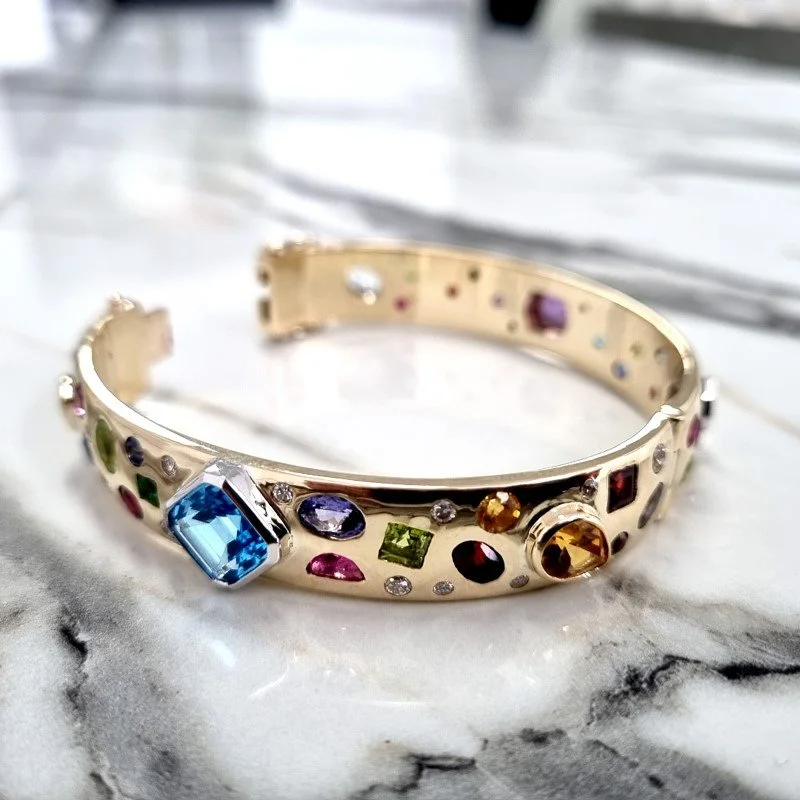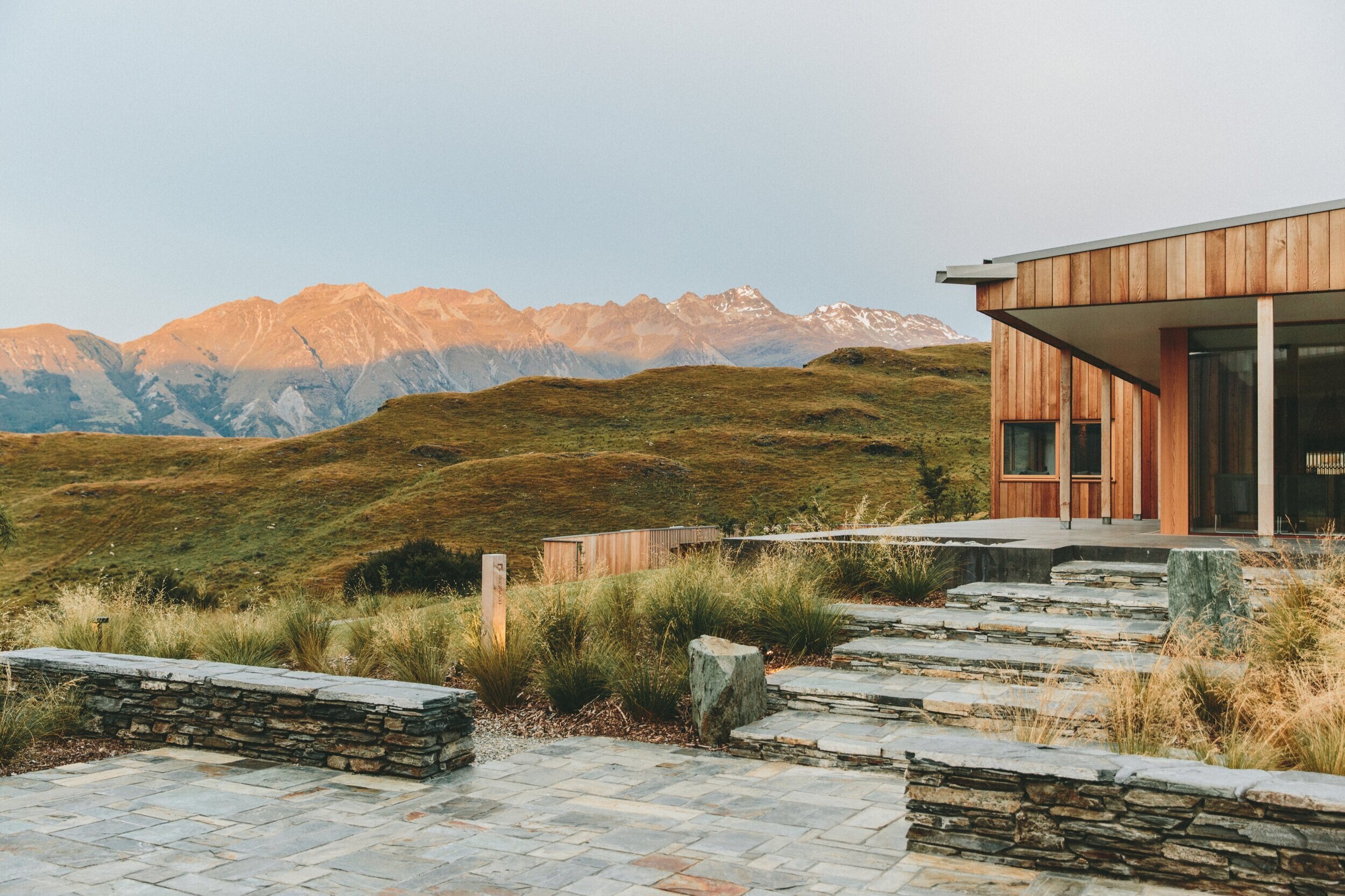A Guide to the Most Popular Gemstones
Discover Your Favourite Coloured Gem
At Sara Handmade Jewellery Kiama, coloured gemstones are our passion and a core part of our bespoke jewellery designs. From vibrant classics like sapphire and emerald to rare beauties like moldavite or red beryl, each stone offers unique colour, history, and meaning. This gemstone glossary is designed as a friendly introduction, helping guide your choice whether creating a custom piece, remodelling sentimental jewellery, or learning more about your favourite gems.
Gemstone Glossary (A–Z)
Amazonite (6–6.5)
A blue-green member of the feldspar family, amazonite is admired for its calming tones. Its moderate hardness makes it suitable for occasional wear, best featured in earrings or pendants.
Amethyst (7)
The beloved purple variety of quartz, amethyst is prized for its vibrant colour and affordable beauty. Many people choose it for its traditional representations of tranquility and clarity.
Ametrine (7)
A natural blend of amethyst and citrine, ametrine shows striking yellow-purple zoning. Almost all ametrine on the market comes from Bolivia, making it a unique gem for custom-made jewellery.
Apatite (5)
Known for dazzling neon blues and a range of other hues, apatite’s softness means it shines brightest in jewellery with less daily wear, such as special occasion pieces or pendants.
Aquamarine (7.5–8)
This blue beryl family gem evokes the sea and is popular as March’s birthstone. The best aquamarines display a lively, clear blue, coveted in both classic and contemporary designs.
Beryl (7.5–8)
Beryl is the mineral group behind classics like emerald, aquamarine, and morganite, valued for eye-catching colours and excellent durability.

Chrysoberyl to Iolite
Chrysoberyl (8.5)
Famous for distinctive varieties like alexandrite and cat’s eye, chrysoberyl is exceptionally durable and offers charming yellow to green shades.
Citrine (7)
A sunny yellow-orange quartz, citrine lifts every piece with warmth and energy. Most citrine is heat-treated amethyst, offering beauty at an accessible price.
Diamond (10)
The world’s hardest natural material, diamond needs no introduction. In addition to classic clear stones, diamonds come in a rainbow of rare “fancy” colours. [Learn more about our diamond sourcing and custom-made engagement rings.]
Emerald (7.5–8)
Emerald is the iconic green gemstone and a symbol of luxury for millennia. Our expert sourcing ensures stones with ideal balance of vivid colour and durability.
Garnet (6.5–7.5)
Best known in deep red, garnets also appear in green, orange, and gold. Their bold colours and good durability make them perfect for both modern and vintage-inspired pieces.
Iolite (7–7.5)
Violet-blue iolite is valued for its affordability and subtle shifts in tone, particularly in well-cut, deeper-hued examples.
Labradorite (6–6.5)
A feldspar gem famous for luminous blue, green, and gold flashes—an effect called labradorescence. Each piece is truly one-of-a-kind.
Lapis Lazuli (5–5.5)
This deep blue, ancient stone has adorned jewellery for thousands of years and is loved for its spiritual and historic significance.
Moldavite (5.5–7)
Moldavite’s greenish natural glass was formed by a meteorite strike. Rare and sought-after, it adds a cosmic connection to any collection.
Moonstone (6)
Moonstone’s characteristic soft glow, or adularescence, is cherished in romantic, ethereal designs, especially as cabochons.
Morganite (7.5–8)
Pastel pink morganite has soared in popularity for engagement rings, prized for its mix of beauty, durability, and gentle colour.
Opal (5.5–6.5)
Each opal is uniquely patterned with flashes of spectral colours. October’s birthstone, opal can be a showstopper in all types of jewellery.
Peridot to Smokey Quartz
Peridot (6.5–7)
Peridot glows only in green, its singular colour the result of iron content. Its fresh, lively hue is ideal in both silver and gold settings.
Quartz (7)
The versatile quartz family includes amethyst, citrine, rose quartz, and smoky quartz—each offering lasting beauty in a wide spectrum.
Red Beryl (7.5–8)
Extraordinarily rare, red beryl is found only in Utah, making it a true collector’s gem.
Rose Quartz (7)
Soft pink and abundant, rose quartz is a gentle favourite for both modern and vintage jewellery designs.
Ruby (9)
Ruby, the red sapphire, is beloved for its fire and incredible hardness—second only to diamond. [Learn about ruby-one of the most famous gemstones.]
Smoky Quartz (7)
A brown-to-grey quartz, smoky quartz is a subtle choice for earth-toned designs and is increasing in popularity.
Frequently Asked Questions About Gemstones
-
What are the most durable coloured gemstones for everyday wear?
-
Sapphires and rubies (both varieties of corundum) are the hardest coloured gems, scoring 9 out of 10 for toughness and durability.
-
Softer stones may be best for pendants or earrings and occasional-wear rings. For daily wear, opt for harder stones like sapphire or quartz.
-
Yes! We offer a Diamond and Gemstone Sourcing service to help you find exactly the right gem for your dream piece. Just ask our team.
Sapphire to Zircon
Sapphire (9)
Famed for rich blue, sapphires also shimmer in pink, yellow, green, and more. Sapphires’ hardness and variety make them ideal for all fine jewellery. [click to learn more about Australian Sapphire or Ceylon Sapphire.]
Sphene (5–5.5)
Sphene dazzles with fiery dispersion exceeding that of diamond. Best suited for earrings or pendants due to its relative softness.
Spinel (7.5–8)
Often mistaken for ruby or sapphire, spinel appears in a striking range of colours and is gaining recognition among modern gem lovers.
Tanzanite (6–6.5)
A single-source gem from Tanzania, tanzanite stuns with its blue-violet hues and is best for dressy or statement pieces.
Topaz (8)
Durable and vividly coloured, topaz—including the popular blue and imperial varieties—offers stunning brilliance for all jewellery types.
Tourmaline (7–7.5)
With more natural colours than any other gem, tourmaline’s versatility is unrivalled. [Explore our ready-made jewellery for tourmaline design inspirations.]
Zircon (6–7.5)
Zircon shines in many colours with exceptional brilliance and fire, though its moderate hardness makes it most suitable for pendants and earrings.
Contact us
Our expertise extends from Custom-made jewellery, Jewellery Remodelling, Diamond and Gemstone Sourcing, to Jewellery Restoration and Repair. If you’d like personalised guidance or inspiration about coloured stones, contact our team today. Every gem has a story—let us help you make it yours.






